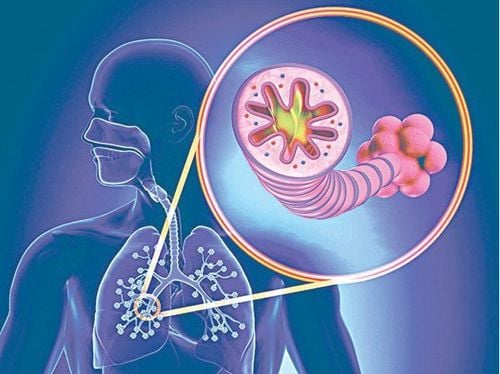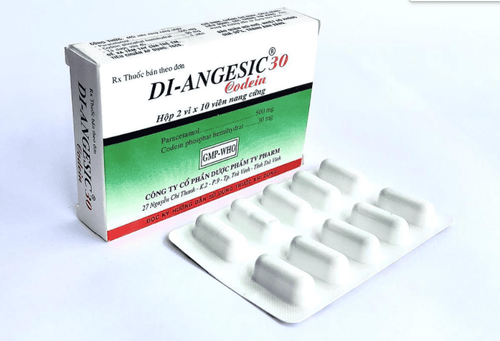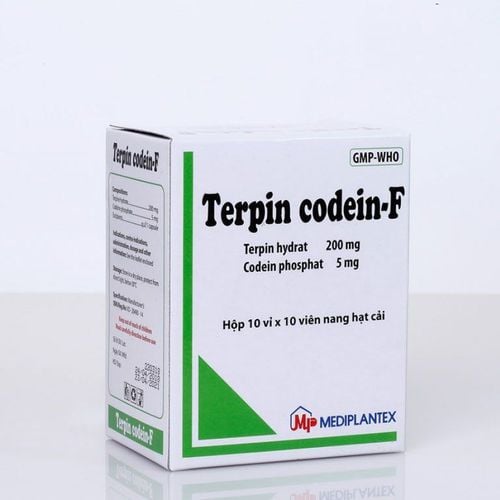This is an automatically translated article.
The article was written by Dr., Doctor Truong Ngoc Hai, Department of Emergency Resuscitation, Vinmec Central Park International General HospitalNasal high-flow oxygen therapy can significantly reduce both mortality and intubation rates in immunocompromised patients with acute respiratory failure, improving dyspnea and comfort in patients presenting to the emergency department with dyspnea and/or hypoxemia.
Clinically applied
Immunocompromised patients have an increased mortality when intubation is required. This is largely due to an increased risk of infection. The HIGH trial [13], performed in immunocompromised patients, did not show a significant reduction in 28-day mortality or intubation rates in patients with hypoxic acute respiratory failure. when comparing high-flow nasal cannula oxygen therapy with standard oxygen therapy. No significant adverse effects were noted due to high-flow nasal cannula oxygen therapy. Hui-BinHuang (2018) performed a meta-analysis showing that compared with low-flow nasogastric oxygen therapy and NIV, high-flow nasogastric oxygen therapy can significantly reduce both mortality and morbidity. rate of intubation in immunocompromised patients with acute respiratory failure.
Shortness of breath and acute hypoxemia are 2 of the most common reasons for patient admission to the emergency department. Nuttapol et al. (2015) reported a prospective randomized comparative study determining whether high-flow nasal cannula oxygen therapy is superior to conventional oxygen therapy in the emergency department. Research has found that high-flow nasal cannula oxygen therapy improves dyspnea and comfort in patients presenting to the emergency department for dyspnea and/or hypoxemia.

Liệu pháp oxy qua ống thông mũi lưu lượng cao giúp cải thiện tình trạng khó thở
According to the National Center for Health Statistics (USA), in 2015 51,811 people died from pneumonia and 544,000 patients went to the emergency room, were discharged from the hospital with pneumonia. Omote et al. (2018) showed that compared with NIV, high-flow nasal cannula oxygen therapy improved 30-day survival in patients with acute respiratory failure due to interstitial pneumonia.
All patients with chronic obstructive pulmonary disease (COPD) will progress to an outcome requiring oxygen, if not death from other causes. COPD exacerbations are also a common reason for hospitalization. Many COPD patients benefit from NIV during the acute phase. However, a major limitation of NIV is the low level of compliance and patient comfort. High-flow nasal cannula oxygen therapy provides the benefits of PEEP and increases oxygen saturation similar to NIV but with increased patient comfort and compliance. In addition, Dzira et al. (2017) found that in GOLD-standardized stage III and IV COPD patients, high-flow nasal cannula oxygen therapy at airflow rates greater than 30 L per minute reduced respiratory rate, reduced inspiratory time to total cycle time and decreased diaphragmatic respiratory work compared with NIV.[14][2][15][16][17][18]

Bệnh nhân mắc phổi tắc nghẽn mạn tính thường phải sử dụng liệu pháp thở oxy liều cao qua ống thông mũi
Improve the effectiveness of the healthcare team
High-flow nasal cannula oxygen therapy is a relatively new treatment and not everyone is familiar with the device. Induction sessions should be held for nurses, respiratory therapists, and other physicians prior to the introduction of hospital treatments. A collaborative team of attending physicians, respiratory therapists, and critical care nurses can significantly improve patient outcomes with high-flow nasal cannula oxygen therapy. Nurses should closely monitor the patient's vitals and breathing while administering high-flow nasal oxygen therapy to ensure there is no risk of respiratory failure. The respiratory therapist adjusts the flow rate and percentage of oxygen to meet the patient's needs and reduce the risk of high oxygen levels or respiratory damage from high pressure (barotrauma). Discussing the effectiveness of high-flow nasal cannula oxygen therapy with the treating physician, or the need for higher levels of respiratory support when needed, the respiratory nurse and physician can improve outcomes. health care results by notifying the treating doctor for timely adjustment to the patient.
To avoid complications and get the best treatment effect, you should go to reputable medical facilities with a team of highly qualified doctors. Vinmec International General Hospital is a high-quality medical facility in Vietnam with a team of highly qualified medical professionals, well-trained, domestic and foreign, and experienced.
A system of modern and advanced medical equipment, possessing many of the best machines in the world, helping to detect many difficult and dangerous diseases in a short time, supporting the diagnosis and treatment of doctors the most effective. The hospital space is designed according to 5-star hotel standards, giving patients comfort, friendliness and peace of mind.
Please dial HOTLINE for more information or register for an appointment HERE. Download MyVinmec app to make appointments faster and to manage your bookings easily.
References
Summary of translations from Sharma S, Danckers M, Sanghavi D, et al. High Flow Nasal Cannula. [Updated 2020 Jul 2]. Print: StatPearls [Internet]. Treasure Island (FL): StatPearls Publishing; 2020 Jan-.
[1]
Segovia B,Velasco D,Jaureguizar Oriol A,Díaz Lobato S, Combination Therapy in Patients with Acute Respiratory Failure: High-Flow Nasal Cannula and Non-Invasive Mechanical Ventilation. Archivos de bronconeumologia. 2018 Jul 12 [PubMed PMID: 30017253]
[2]
de Jong A,Calvet L,Lemiale V,Demoule A,Mokart D,Darmon M,Jaber S,Azoulay E, The challenge of avoiding intubation in immunocompromised patients with acute respiratory failure. Expert review of respiratory medicine. 2018 Aug 12 [PubMed PMID: 30101630]
[3]
Mündel T,Feng S,Tatkov S,Schneider H, Mechanisms of nasal high flow on ventilation during wakefulness and sleep. Journal of applied physiology (Bethesda, Md. : 1985). 2013 Apr; [PubMed PMID: 23412897]
[4]
Parke RL,McGuinness SP, Pressures delivered by nasal high flow oxygen during all phases of the respiratory cycle. Respiratory care. 2013 Oct; [PubMed PMID: 23513246]
[5]
Parke RL,Bloch A,McGuinness SP, Effect of Very-High-Flow Nasal Therapy on Airway Pressure and End-Expiratory Lung Impedance in Healthy Volunteers. Respiratory care. 2015 Oct; [PubMed PMID: 26329355]
[6]
Esquinas AM,Karim HMR,Soo Hoo GW, Insight to the growing utilizations of high flow nasal oxygen therapy over non-invasive ventilation in community teaching hospital: alternative or complementary? Hospital practice (1995). 2018 Aug 9 [PubMed PMID: 30092679]
[7]
Di Mussi R,Spadaro S,Stripoli T,Volta CA,Trerotoli P,Pierucci P,Staffieri F,Bruno F,Camporota L,Grasso S, High-flow nasal cannula oxygen therapy talking postextubation neuroventilatory drive and work of breathing in patients with chronic obstructive pulmonary disease. Critical care (London, England). 2018 Aug 2 [PubMed PMID: 30071876]
[8]
Piastra M,Morena TC,Antonelli M,Conti G, Uncommon barotrauma while on high-flow nasal cannula. Intensive care medicine. 2018 Jun 30 [PubMed PMID: 29961104]
[9]
Frat JP,Thille AW,Mercat A,Girault C,Ragot S,Perbet S,Prat G,Boulain T,Morawiec E,Cottereau A,Devaquet J,Nseir S, Razazi K,Mira JP,Argaud L,Chakarian JC,Ricard JD,Wittebole X,Chevalier S,Herbland A,Fartoukh M,Constantin JM,Tonnelier JM,Pierrot M,Mathonnet A,Béduneau G,Deletage-Métreau C,Richard JC, Brochard L,Robert R, High-flow oxygen through nasal cannula in acute hypoxemic respiratory failure. The New England journal of medicine. 2015 Jun 4 [PubMed PMID: 25981908]
[10]
Hernández G,Vaquero C,Colinas L,Cuena R,González P,Canabal A,Sanchez S,Rodriguez ML,Villasclaras A,Fernández R, Effect of Postextubation High-Flow Nasal Cannula vs Noninvasive Ventilation on Reintubation and Postextubation Respiratory Failure in High-Risk Patients: A Randomized Clinical Trial. JAMA. 2016 Oct 18; [PubMed PMID: 27706464]
[11]
Hernández G,Vaquero C,González P,Subira C,Frutos-Vivar F,Rialp G,Laborda C,Colinas L,Cuena R,Fernández R, Effect of Postextubation High-Flow Nasal Cannula vs Conventional Oxygen Therapy on Reintubation in Low-Risk Patients: A Randomized Clinical Trial. JAMA. 2016 Apr 5; [PubMed PMID: 26975498]
[12]
Thille AW,Muller G,Gacouin A,Coudroy R,Decavèle M,Sonneville R,Beloncle F,Girault C,Dangers L,Lautrette A,Cabasson S,Rouzé A,Vivier E, Le Meur A,Ricard JD,Razazi K,Barberet G,Lebert C,Ehrmann S,Sabatier C,Bourenne J,Pradel G,Bailly P,Terzi N,Dellamonica J,Lacave G,Danin Pé,Nanadoumgar H,Gibelin A,Zanre L,Deye N,Demoule A,Maamar A,Nay MA,Robert R,Ragot S,Frat JP, Effect of Postextubation High-Flow Nasal Oxygen With Noninvasive Ventilation vs High-Flow Nasal Oxygen Alone on Reintubation Among Patients at High Risk of Extubation Failure: A Randomized Clinical Trial. JAMA. 2019 Oct 2; [PubMed PMID: 31577036]
[13]
Azoulay E,Lemiale V,Mokart D,Nseir S,Argaud L,Pène F,Kontar L,Bruneel F,Klouche K,Barbier F,Reignier J,Berrahil-Meksen L,Louis G,Constantin JM,Mayaux J,Wallet F,Kouatchet A,Peigne V,Théodose I,Perez P,Girault C,Jaber S,Oziel J,Nyunga M,Terzi N,Bouadma L,Lebert C,Lautrette A,Bigé N, Raphalen JH,Papazian L,Darmon M,Chevret S,Demoule A, Effect of High-Flow Nasal Oxygen vs Standard Oxygen on 28-Day Mortality in Immunocompromised Patients With Acute Respiratory Failure: The HIGH Randomized Clinical Trial. JAMA. 2018 Nov 27 [PubMed PMID: 30357270]
[14]
Beng Leong L,Wei Ming N,Wei Feng L, High flow nasal cannula oxygen versus noninvasive ventilation in adult acute respiratory failure: a systematic review of randomized-controlled trials. European journal of emergency medicine : official journal of the European Society for Emergency Medicine. 2018 Jun 19 [PubMed PMID: 29923842]
[15]
Mauri T,Galazzi A,Binda F,Masciopinto L,Corcione N,Carelesso E,Lazzeri M,Spinelli E,Tubiolo D,Volta CA,Adamini I,Pesenti A, Grasselli G, Impact of flow and temperature on patient comfort during respiratory support by high-flow nasal cannula. Critical care (London, England). 2018 May 9 [PubMed PMID: 29743098]
[16]
Lodeserto FJ,Lettich TM,Rezaie SR, High-flow Nasal Cannula: Mechanisms of Action and Adult and Pediatric Indications. Cureus. 2018 Nov 26; [PubMed PMID: 30740281]
[17]
Clayton JA,McKee B,Slain KN,Rotta AT,Shein SL, Outcomes of Children With Bronchiolitis Treated With High-Flow Nasal Cannula or Noninvasive Positive Pressure Ventilation. Pediatric critical care medicine : a journal of the Society of Critical Care
Medicine and the World Federation of Pediatric Intensive and Critical Care Societies. 2019 Feb; [PubMed PMID: 30720646]
[18]
Hill NS,Ruthazer R, Predicting Outcomes of High Flow Nasal Cannula for ARDS: An Index that ROX. American journal of respiratory and critical care medicine. 2019 Jan 29; [PubMed PMID: 30694696]













